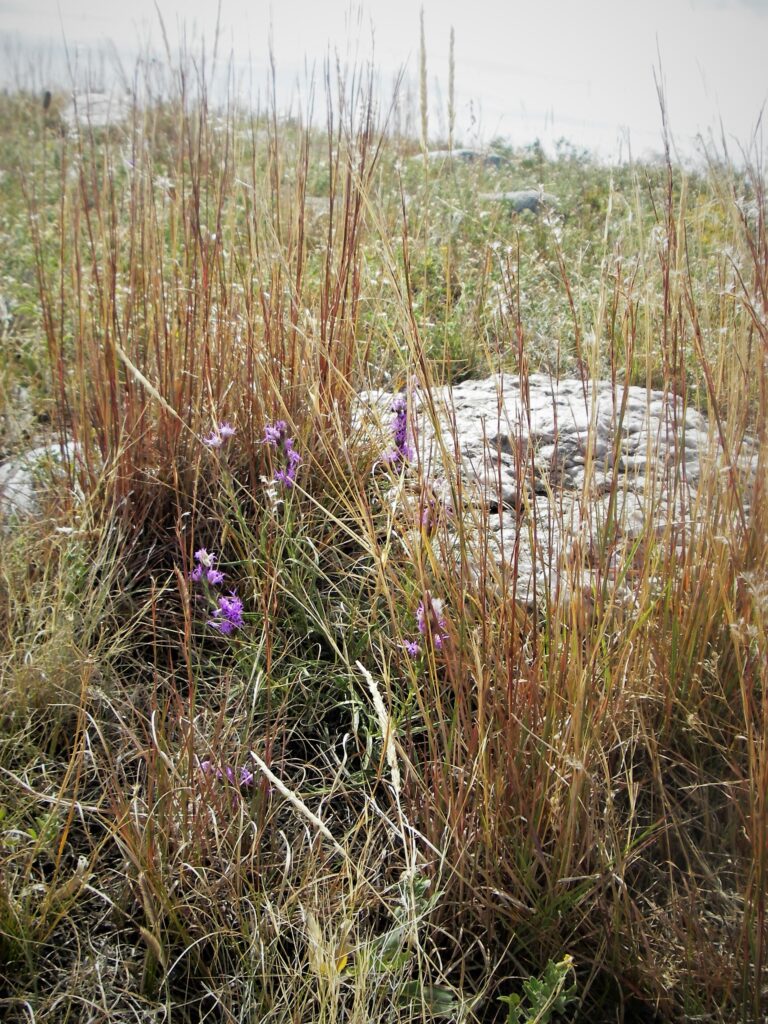Ecological Function

Native grasses cater to a landscape’s form and function. Wild Ones elevates the role of native plants in the landscape design process: ecological function is paramount. Development along the Front Range has displaced the shortgrass prairie, dominated by Blue Grama (Bouteloua gracilis) and Buffalo Grass (Buchloe dactyloides). Combined with forbs (herbaceous, broadleaf flowering plants) and other native grasses, these deeply-rooted perennials stabilize and nurture soil in a dry and windswept land. Remnant populations of tallgrass prairie species — Big Bluestem (Andropogon gerardii), Switchgrass (Panicum virgatum) and Indian Grass (Sorghastrum nutans) — persist on the windward side of the mountains. Mixed grass prairie species like Little Bluestem (Schizachyrium scoparium), Western Wheatgrass (Pascoplyrum smithii) and June Grass (Koeleria macrantha) thrive in damp swales and riparian corridors. All of these species provide critical forage and habitat for insects, birds and other wildlife. Many native grass species are critical larval host plants for native butterfly and moth species. Planting native grasses in spaces impacted by urban and agricultural development helps to rebuild broken food webs and revive degraded soils.
Aesthetic Form
Native grasses evoke a sense of place, recalling the vast prairies that once blanketed the land as far as the eye could see. Planted in drifts, native grasses offer sweeps of color and texture across a landscape. Plant grasses alongside pathways and retaining walls to soften hardscape elements. Grasses add motion to a garden. Fine leaf blades and delicate seeds dance in the slightest breeze. Seed heads sparkle when backlit by morning or evening sunlight. Grasses like Big and Little Bluestem transform in autumn to tawny shades of burgundy; several nativars have been introduced that offer spectacular fall color. Leave grasses standing through the winter to catch the beauty of frost and snow on the stems and seeds.
Cool and Warm Season Colorado Native Grasses
Grasses are seasonal, responding to shifts in day length and temperature. Cool season grasses actively grow in the cooler months of spring and fall, and will often go dormant in the heat of summer after flowering and setting seed. Warm season grasses wake up when air and soil temperatures warm, typically in late spring on the Front Range.
For additional information on grasses:
Cool and Warm Colorado Native Grasses highlights each species’ mature size and growth habit, cultural needs and optimal window to sow seeds.
Grasses are the Foundation provides more details about the characteristics and benefits of grasses as well as how to grow them yourself.
Curious to learn more about transforming your garden into a habitat with Colorado native wildflowers, grasses, shrubs, and trees? Check out our native gardening toolkit, register for an upcoming event, subscribe to our newsletter, and/or become a member – if you’re not one already!
